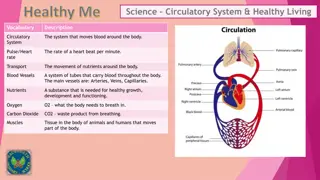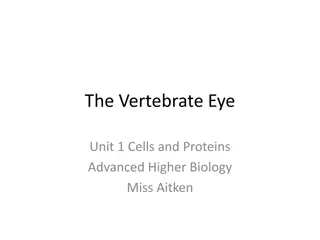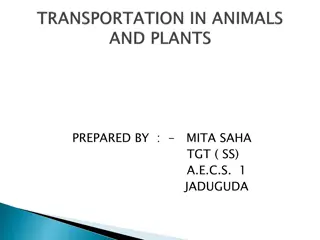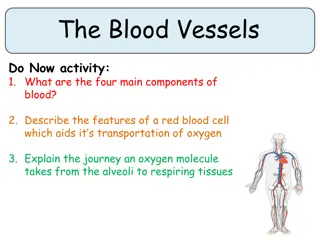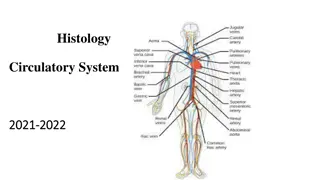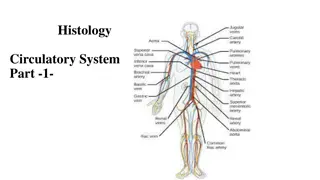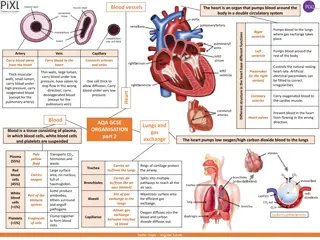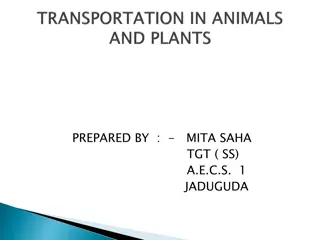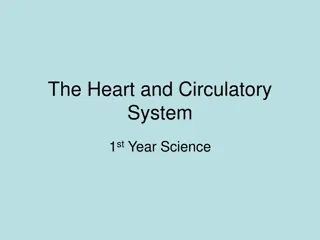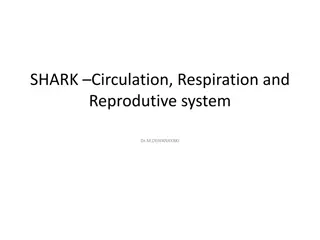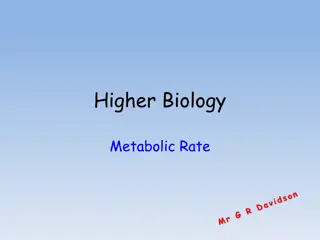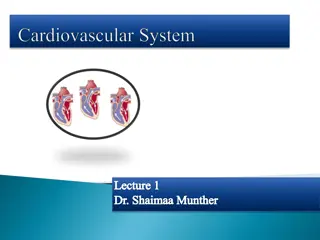Understanding Vertebrate Circulatory Systems
Vertebrates have closed circulatory systems with efficient mechanisms for oxygen delivery through cardiovascular systems. Fish have a single circulatory system with a two-chambered heart, while other organisms utilize double circulatory systems for more efficient blood flow to both lungs and body tissues.
Download Presentation

Please find below an Image/Link to download the presentation.
The content on the website is provided AS IS for your information and personal use only. It may not be sold, licensed, or shared on other websites without obtaining consent from the author. Download presentation by click this link. If you encounter any issues during the download, it is possible that the publisher has removed the file from their server.
E N D
Presentation Transcript
Metabolism and Survival Key Area 3b Heart Comparison
Learning Intentions By the end of this topic you should be able to: Describe the mechanisms of delivery of oxygen in terms of cardiovascular system of different animals;
From N5 you should know The main blood vessels involved in the circulation of blood around the body are: Arteries carry blood away from the heart (under high pressure). Capillaries smallest blood vessels which exchange nutrients, gases, and waste products between the blood and the body tissue. Veins carry blood back to the heart (under low pressure). The heart has two types of chambers atria and ventricles. Atria are where blood enters the heart and ventricles are where blood leaves the heart.
Oxygen delivery High metabolic rates require efficient delivery of oxygen to cells for aerobic respiration. Multicellular organisms need oxygen delivery systems such as cardiovascular systems
Circulatory Systems in vertebrates All vertebrates have closedcirculatory systems where the blood is contained in a continuous circuit of blood vessels and is kept moving by a muscular pump (a heart). In closed systems a drop in pressure occurs when blood passes through the capillaries because the narrow tubes offer resistance to the flow of blood
Fish - Single circulatory system The circulatory system of a fish is described as single because blood passes through the 2- chambered heart only once for each circuit of the body In the fish the blood flows to the gills at high pressure but is delivered to the capillaries at low pressure. It is a relatively primitive and inefficient method
The heart of the fish It is a 2 chambered heart with one atrium and one ventricle with a valve in between.
Double circulatory system In organisms where blood passes through the heart twice for each complete circuit of the body, they are said to have a DOUBLE circulatory system Blood is pumped to both the lungs and the body at high pressure ensuring vigorous flow making it more efficient than single systems.
Incomplete double circulatory system Reptiles and amphibians circulatory systems are described as incomplete because there are 2 atria but only 1 ventricle and some mixing of oxygenated blood from the lungs and deoxygenated blood from the body occurs In amphibians the mixing is not a major problem as the blood returning from the body has been partially oxygenated through its moist skin
Amphibian and reptile heart They are made of 3 chambers, 2 atria and 1 ventricle. In reptiles (eg lizard), little mixing occurs because the single ventricle is partly divided by a septum
Chambers Diagram/description Animals that have Three 2 Atrium 1 Ventricle Amphibians eg frog lungs body 2 entries for blood Deoxygenated from body Oxygenated from lungs Mixing of blood in the ventricle
Chambers Diagram/description Animals that have Three 2 Atrium 1 Ventricle Reptiles e.g. lizard (NOT birds) lungs body Partial separation of the ventricle means there is less mixing of the bloods from atria
Complete circulatory systems Birds and mammals have complete circulatory systems. They are complete because the heart has 2 atria and 2 ventricles completely separated by a septum.
Chambers Diagram/description Animals that have Four 2 Atrium 2 Ventricle bird or mammal lungs body Closed loops for deoxygenated and oxygenated blood
Comparing circulatory systems Birds and mammals have higher metabolic rates than reptiles and amphibians, which in turn have higher metabolic rates than fish. The complete double circulatory system in birds and mammals enable higher metabolic rates to be maintained. There is no mixing of oxygenated and deoxygenated blood and the oxygenated blood can be pumped out at a higher pressure. This enables a more efficient oxygen delivery to cells.



